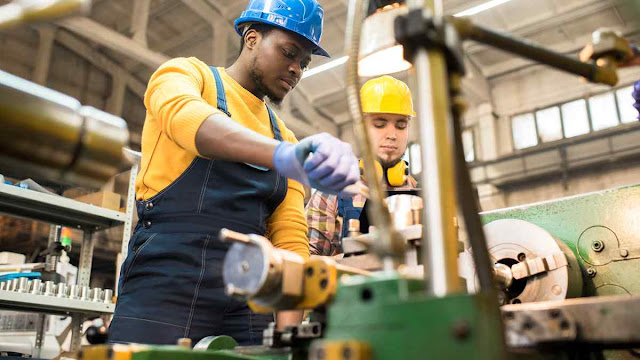10 THINGS TO KNOW ABOUT HEAD PROTECTION FOR INDUSTRIAL WORKERS
Head protection is one of the most
critical aspects of ensuring the safety of industrial workers. In India, safety product equipment suppliers and
distributors play a vital role in providing high-quality head protection
equipment to industries. Here are ten essential things that every industrial
worker should know about head protection.
1. Safety
Product Equipment Suppliers in India:
Safety product equipment suppliers in India are responsible for providing
high-quality head protection equipment to industries. These suppliers offer a
wide range of products such as hard hats, safety helmets, bump caps, and other
headgear to protect workers from head injuries.
2. Safety
Products Equipment Suppliers Distributor India: Safety products equipment suppliers
distributor in India play a crucial role in the distribution of head protection
equipment to industries. These distributors ensure that the right safety
equipment is delivered to the right place at the right time, helping to prevent
accidents and injuries.
3. Safety
Product Equipment Distributor India:
Safety product equipment distributors in India work closely with safety
equipment manufacturers to provide a wide range of products to industries.
These distributors offer high-quality head protection equipment such as safety
helmets, hard hats, and bump caps, among others.
4. Hard Hats: Hard hats are the most commonly used head
protection equipment in the industrial sector. These hats are designed to
protect workers from falling objects and other hazards that can cause head
injuries. Hard hats are made of durable materials that can withstand impact and
provide maximum protection to workers.
5. Safety
Helmets: Safety helmets are another type of
head protection equipment used in industries. These helmets are designed to
protect workers from impact and penetration hazards, such as falling objects,
flying debris, and sharp objects. Safety helmets provide a higher level of
protection than hard hats and are recommended for high-risk work environments.
6. Bump Caps: Bump caps are a type of headgear used in
industries where workers are exposed to low-risk hazards. These caps provide
protection against minor head injuries, such as bumps and scrapes. Bump caps
are lightweight and comfortable to wear, making them suitable for workers who
need to wear headgear for extended periods.
7. Standards
and Regulations: In India, head
protection equipment must meet certain standards and regulations to ensure
maximum protection for workers. These standards and regulations are set by
organizations such as the Bureau of Indian Standards (BIS) and the Occupational
Safety and Health Administration (OSHA).
8. Proper Fit: It is essential to ensure that head
protection equipment fits properly to provide maximum protection to workers.
Ill-fitting headgear can cause discomfort and may not provide adequate
protection. Workers should be trained to select and wear headgear that fits
properly.
9. Maintenance: Head protection equipment should be
maintained regularly to ensure its effectiveness. Workers should inspect their
headgear before each use and report any defects or damages to their
supervisors. It is also essential to replace headgear that has been damaged or
worn out.
10. Training: Proper training is critical to ensure that
workers understand the importance of head protection and know how to use
headgear effectively. Employers should provide training on the proper use,
maintenance, and inspection of head protection equipment to ensure the safety
of their workers.
In
conclusion, head protection is a critical aspect of ensuring the safety of
industrial workers in India. Safety
product equipment suppliers in India and distributors play a vital role in
providing high-quality head protection equipment to industries. By following
the ten essential things discussed above, workers can reduce the risk of head
injuries and work safely in their workplaces.


.jpg)

Comments
Post a Comment